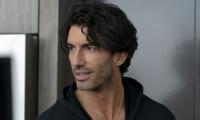Bilawal Bhutto Zardari and Asif Ali Zardari are trying to restore the PPP’s political standing in Punjab. While Bilawal is taking care of the party’s organisation, his father is wooing local notables into the party’s fold.
In the last few months, Bilawal has spent a considerable amount of time in the provincial capital attending to the party’s organisational matters in the province. He has appointed office-bearers of the party at the provincial and district levels without any apparent interference from his father. Asif Zardari, however, is holding meetings in Lahore with local notables from all over the province. He has announced plans to hold public rallies in the province and oversee the party’s election campaign. After the 2013 election setback in Punjab, the PPP leadership is making the first serious attempt for the party’s revival in the province.
In the 2013 elections, the PPP faced a humiliating defeat in 145 out of 148 National Assembly constituencies in Punjab, with the party’s candidates languishing at the third or fourth positions. In Lahore – where the party, in its heyday, used to receive 50,000-plus votes in a national constituency – the tally had ebbed to merely a few thousand votes. Since then, the same trend has been witnessed in most by-elections.
In the last general election, a large segment of the traditional PPP voters swung to the PTI against the party’s calculation that Imran Khan would split the middle class vote-bank of Nawaz Sharif. For the PPP, the writing was on the wall. It could no longer keep drawing on the goodwill generated by the ‘pro-poor’ image of Zulfikar Ali Bhutto and the martyrdom of Benazir Bhutto. Considering the anger against the corruption and mismanagement of its leadership, the party needed to approach the electorate with a new look. Bilawal is now providing that new look as the show-boy of the party while Asif Zardari is making key decisions and, more importantly, holding the wallet.
For reviving its position in the province, the PPP’s strategy seems to be based on two major points. First, a young Bilawal Bhutto Zardari has more appeal for the public instead of his father and he will address public meetings to pull in the crowds. There is an assumption that a part of the PPP’s traditional vote-bank that had defected to the PTI in 2013 now stands disenchanted with Imran Khan and plans to revert to the PPP. Second, Asif Zardari can bring local notables, such as Faisal Saleh Hayat, from the province into the party’s fold as he did in Sindh. The party assumes that the so-called ‘electables’ – those with personal and political clout – will bolster its chances in these constituencies.
The PPP’s current strategy is based more on wheeling-dealing rather than appealing to the public through a radical agenda, which was the bane of the party when it was the most popular political entity in the country. Today, the party does not stand for any socialist slogan that had distinguished it from other traditional parties in the 1970s. In the 1980s, the party stood for the restoration of democracy and earned an image of people’s power against the military’s dictatorial rule. Though Benazir’s support dwindled in Punjab, she continued to draw backing from a section of the population who viewed her as a liberal, moderate politician as compared to the conservative Nawaz Sharif.
A major fact that is believed to have led to the sharp decline of the party’s status in Punjab after Asif Zardari seized its reins is the common perception about the corrupt practices of its leadership and the cycle of bad governance during its past tenure between 2008 and 2013. The people in Punjab still have memories of the PPP’s rule during which they suffered power outages of between 16 and 20 hours every day. No major development project was initiated during this period. In the 2013 elections, slogans championing the cause of democracy and civilian rule were no longer relevant and the party completely lost support in Punjab.
As for now, the PPP has little to show off except a young Bilawal Bhutto Zardari. Otherwise, despite being in power in Sindh for the last nine years, the PPP has no worthwhile achievement to its credit. Instead, it carries the blemish of creating a mess of civic amenities in Karachi. The scenes of trash-filled streets of the provincial capital and the stories of its leaders’ alleged involvement in corruption have further spoiled the party’s image among the urban middle class.
The PPP’s strategy of reliance on local notables tends to ignore the fact that a local leader cannot win an election on his/her own. Thanks to the electronic media and other means of communication, party affiliations have seeped deep down into the rural areas. The party vote, combined with a candidate’s personal influence, makes a winning combination. Unless a political party has a solid vote-bank of around 30,000 in a National Assembly constituency of Punjab, the chances of it coming close to winning an election remain slim.
However, the plan may somewhat work in the rural, backward southern districts of the province where a segment of the population resents the Lahore-centric development policy of the Sharifs. Perhaps sensing more acceptability in the southern parts of Punjab, Asif Zardari has announced his plans to set up a permanent secretariat in Multan. If the PPP could win even half of the national seats in southern Punjab, it can – if the PTI fails to click – at least be in a position to negotiate the status of a coalition partner in the future setup in Islamabad.
The chances of the PPP’s renewal in Punjab could increase if Bilawal alone led the show while Asif Zardari and the old, discredited party leaders took the back seat or at least restrict themselves to other provinces. Bilawal holds promise in Punjab – especially for the low-income population which has been ignored by both the PML-N and the PTI – but a well-entrenched, unfavourable perception about the PPP leadership is likely to remain a drag for him.
Email: adnanadilzaidi@gmail.com
Now, court can only act upon applications filed under its jurisdiction
Fact is that let alone Pakistan, Trump hasn’t really spoken much for any South Asian country, not even India
By embracing quantum mechanics, humanity has unlocked technologies once thought unimaginable
Regular reporting could ensure accountability and adaptive management
Report assesses readiness of over 190 countries to meet demands of the international job market
In Pakistan, prospect of introducing Starlink has been topic of discussion, particularly due to frequent internet...







